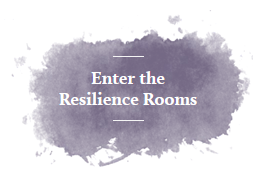It’s a sure way to lead to your unhappiness.
We grow up with very distinct messages, both overtly and subliminally, that the most sought after state is one of “happiness”, a “positive attitude” and eternal “gratitude.” Our society supports these ideas and ideals. Take a look at all the posts on social media that list 5, 10, 15, etc. ways to happiness and those that depict individuals who aren’t successful at achieving “happiness” are essentially characterized as depressed, stuck, and hopeless. It is a sure way to perpetuate unhappiness.
There are other insinuations regarding how we should recognize how fortunate we are by keeping gratitude journals, look in the mirror every day and affirm how beautiful and terrific we are, and idyllically relish in the lives we lead. A lot easier to say, much harder to internalize and feel at the gut level.
We Instinctually Think and Feel Negatively
All of these sentiments are helpful and relevant for those individuals who can readily practice and embrace them. There are flaws with preaching them because they are counter to how we think, feel, and function as human beings. Our negativity bias and challenge with staying in the present moment compels many of us to regret, fear, worry, and spiral into thinking and feeling negatively.
It leaves in its path individuals who feel as if there is something fundamentally wrong with them. Those who become sad, frustrated, and disappointed because they cannot rid themselves of thoughts and feelings that they perceive as getting in their way, no matter how hard they try. They feel ineffective because they are not successful at reaching these ideal states of thinking, feeling, and being.
I am working with a teen who is extremely fearful of being “unhappy” at college in the Fall. She is frustrated that she isn’t as “happy” as her peers to receive her acceptance into the college she hoped for. She was also sad that she couldn’t fully connect with the positive feelings she should be having in regard to going off to college. She criticized herself for not being able to be “grateful enough” for being given this incredible opportunity.
She heard the same sentiments expressed repeatedly by family and friends, “think positive thoughts”, “be grateful that you got into such an impressive school” and “be happy because you’ll be independent and have your freedom.” It all sounded great, but she wasn’t connecting to any of it and felt even worse for not thinking and feeling the way people expected and thought she should. Her basic level of disappointment (i.e., “unhappiness”) also got commingled with sadness, guilt, and frustration with her and everyone else’s “should” “ought to” and “musts.” It is riddled with the expectations she has for herself and those that others have of her. Who could blame her?
The Flaws with Preaching Happiness:
(1) There isn’t a functional way to define the term happiness. It is one of the most ambiguous terms I encounter and evokes intense feelings when there is an absence of “it.” What’s helpful is fully defining what it means for each of us and looking at it in context with being content or satisfied. It is typically linked to a value or principle we have or hold and goals that we want to achieve or continue achieving. If it is clearly defined, we can assess on a daily basis if we are carrying each value out, as opposed to, ambiguously being “happy” which is a feeling state that is impossible to continually maintain.
For example, if we aspire for improved health and we earmarked exercising four days a week as a means to contribute to our happiness, then we can assess what we need to do or continue to do to support positive thoughts and feelings. The ball is in our court so to speak. We get to decide what actions we want to take to improve and enhance ourselves so that we are content and satisfied.
(2) As humans we are afforded with and entitled to an array of feelings. Feelings run along a continuum from the “more” comfortable to the “less” comfortable. Our natural tendency and pull is toward not accepting, avoiding and getting rid of our uncomfortable feelings so we can reach and maintain a “happy” state. It is a typical human phenomenon to experience an array of thoughts and feelings. Thoughts and feelings are what they are.
Our goal isn’t to just feel the more comfortable “happier” feelings, but rather, to learn to get comfortable with being uncomfortable. We are not kids at a toy store where we can purchase the toys we prefer and leave the other ones behind. All feelings have a place, are purposeful and will inevitably show up. Our humanness dictates that it is bound to happen. We do not have control over thoughts or feelings, only over our actions and reactions.
(3) Chasing “happiness” is bound to evoke feelings of inadequacy because of the lack of feasibility and its ambiguity. If you are not happy does that mean that then you must be unhappy or depressed? If you cannot get happy, then there must be something wrong with you. Also, you may question, will I ever be happy? And, what if I never am? My clients endlessly share their despair because of their fear that they will never be happy or find happiness. They have a challenging time defining what this specifically means for them.
The Flaws with Preaching Gratitude:
(1) Gratitude typically does not show up innately. There are numerous factors that contribute to cultivating this state. It is relative to a person’s personal experiences and circumstances, their culture, how they are socialized, etc. For example, a person can live a very modest lifestyle and feel gratitude and contentment with all that is afforded to them and another person can live a life of wealth and luxury and not generally feel gratitude and consistently feel they are lacking and yearn for more. Just because a person wants to feel gratitude does not mean that they instinctually and automatically will.
(2) Gratitude is usually forced upon us because we have been socialized and taught to compare ourselves and our circumstances to others. When we compare, our ability to connect to our gratitude is temporary and fleeting. Integrating a state of gratitude is a process, not something that can be imposed. There is great value in remaining present with ourselves to evaluate what our needs are and to what we personally aspire to. When we achieve those things, which connotes being proactive and taking direct action, we can reach personal satisfaction and experience a true feeling of gratitude.
(3) Teaching gratitude is not as much in the saying as it is in the doing. Taking action on behalf of being appreciative and giving back to others is critical. For example, I have my children participate in events and situations which facilitates connectedness to their gratitude which allows for more integration and internalization through the process.
When my daughter was six years old, she donated 12 inches of her hair to make wigs for ill children who have lost their hair due to chemotherapy and other medical treatments. My sons volunteer, play sports with, and mentor children in need. To celebrate their coming of age, they fundraised, and we took each of them on a mission to underserved African communities to personally connect with and bring much needed supplies to them. Impactful life experiences reinforce genuine appreciation.
The Flaws with Preaching Positive Thinking & Positive Affirmations:
(1) Our thinking falls on a continuum from the more or less “positive” to the more or less “negative.” The more positive thinkers are referred to as optimists and more negative thinkers as pessimists. Some of us fall a bit to extremes and some of us are somewhere in between. Because our minds truly have a mind of their own, some of us weave in and out of positive and negative thinking.
There are a multitude of factors that influence the direction our thinking takes. It wouldn’t be effective to think unilaterally and “always” think positively – both positivity (i.e., hopefulness, anticipation, etc.) and negativity (i.e., fear, disappointment, etc.) have a place. Negative thinking is just as critical too. It lets us know what is meaningful to us and further connects us with our values, helps to motivate us, allows us to assess when we’re in danger, among many other things.
(2) Wherever we tend to go, whether in the positive or in the negative direction, we can and should assess whether our positivity or negativity is driving our behaviors in a certain direction and whether that action allows us to be our best self. We could look to create balance by opening ourselves up to more expansive and open thinking.
For example, just because you have the thought, “I’m not bound to meet anyone new, so I don’t think I’ll attend the networking event” do you necessarily choose not to go? You may instead think, “I realize it’s important for me to meet new people and I’m fearful that I won’t so I’ll make it a point to go and extend myself to others.” In this instance the negative thoughts served a valuable purpose. It is not necessarily the thinking that’s the issue, it is the actions that follow.
(3) Repeating positive affirmations does not get us any closer to believing and buying into those sentiments. It is taking action proactively that gives credence to those words. Think about it, if someone were to refer to you as a stupid, ugly and/or an angry person, how would you feel? If you felt confidence in your intelligence, appearance and demeanor, you probably wouldn’t think twice about those statements. It would only sting (putting aside your hurt toward that person) if you question or don’t fully have confidence in yourself and your abilities relative to the label. As many times as you say that you are thoughtful, you won’t truly connect to that value unless you are living your life thoughtfully. Back up the positive affirmations and act on behalf of them.
It is okay to initiate efforts toward enhancing ourselves, but we are all fundamentally fine just as we are. There aren’t any ideals or states of mind that we need to aspire to. We are who we are. It does not make us bad or wrong because we are not inherently happy, have gratitude or relay positive affirmations. Besides, just because we practice expressing the sentiments, does not necessarily mean we will commit and connect to any of them.
The real question lies with how to internalize the action we are taking and connect it at the gut level so that it is fully integrated. A thing to keep in mind is when we cut off, avoid or seek to rid ourselves of negative feelings, in the process, we also run the risk of cutting off the more positive ones as well. To fully tap into happiness, which may have been cut off too, you need to identify your values, formulate goals, take direct action and allow for ALL feelings. This includes both the more positive ones and the negative ones as well. It is in the learning to be content and satisfied.
With the teen patient I referred to, when we broke down what was important to her, what she will seek to accomplish and how she will assess her progress at college, she was able connect with what would make her satisfied and feel happy. She looked up at me and said, “I want to feel happy, but I never knew what happiness was because I never knew how to get there or let it in.” It was a powerful moment for the two of us.
We can all create powerful moments if we accept ourselves as human, thus allowing ourselves to be, just as we are, with all of our array of thoughts and feelings. We have to let go of our “shoulds” and unrealistic expectations we set on ourselves which are not conducive to the way humans think and feel. It is all in the doing. Go in the direction of behaving in ways that will fortify contentment, gratitude, and positivity.
Here is a I Am Enough Guided Meditation led by me. Please subscribe to my YouTube channel for more talks and guided meditations.
Blog as shared in Psychology Today.



